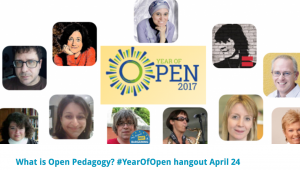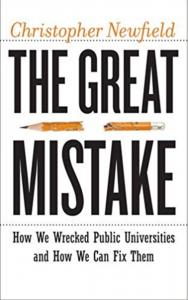Warning: Undefined array key "ssba_bar_buttons" in /home/robinder/public_html/wp-content/plugins/simple-share-buttons-adder/php/class-buttons.php on line 598
Warning: Undefined array key "ssba_bar_buttons" in /home/robinder/public_html/wp-content/plugins/simple-share-buttons-adder/php/class-buttons.php on line 598
Warning: Undefined array key "ssba_bar_buttons" in /home/robinder/public_html/wp-content/plugins/simple-share-buttons-adder/php/class-buttons.php on line 598
Warning: Undefined array key "ssba_bar_buttons" in /home/robinder/public_html/wp-content/plugins/simple-share-buttons-adder/php/class-buttons.php on line 598
Warning: Undefined array key "ssba_bar_buttons" in /home/robinder/public_html/wp-content/plugins/simple-share-buttons-adder/php/class-buttons.php on line 598
Warning: Undefined array key "ssba_bar_buttons" in /home/robinder/public_html/wp-content/plugins/simple-share-buttons-adder/php/class-buttons.php on line 598
Warning: Undefined array key "ssba_bar_buttons" in /home/robinder/public_html/wp-content/plugins/simple-share-buttons-adder/php/class-buttons.php on line 598
Open Pedagogy. I’m taking a 15-minute break in a busy afternoon to sketch out some thoughts ahead of the #YearOfOpen hangout happening in a few minutes.
- Access. If we care about book costs, it’s because we understand that the real cost of co
 llege goes beyond tuition. If we care about the real cost of college, then we should also care about child care costs, transportation costs, lost opportunity costs, food insecurity, homelessness, the digital divide, and myriad other issues that prevent our students from accessing Higher Education. The open license helps us reduce textbook costs, but it also symbolizes the belief that college costs– everything from tuition to transportation– should be addressed and reduced/covered as part of a strong public educational infrastructure. OER, for me, is part of a commitment to building a system in which the public pays itself for what it needs: the public funding of systems and structures that help students make it to and through college.
llege goes beyond tuition. If we care about the real cost of college, then we should also care about child care costs, transportation costs, lost opportunity costs, food insecurity, homelessness, the digital divide, and myriad other issues that prevent our students from accessing Higher Education. The open license helps us reduce textbook costs, but it also symbolizes the belief that college costs– everything from tuition to transportation– should be addressed and reduced/covered as part of a strong public educational infrastructure. OER, for me, is part of a commitment to building a system in which the public pays itself for what it needs: the public funding of systems and structures that help students make it to and through college. - Connection. Helping students become lifelong learners is a real thing, and I am tired of the lip service that we pay it. We hope that by inspiring students and helping them love learning, that will somehow magically assist them in ongoing learning. But without the infrastructure of public institutional education, we can’t presume that students have the tools to keep learning. Teaching them the skills that help them enter a collaborative scholarly and/or professional community will give them access to the content in their fields as it changes over time. Linking content to community this way moves education from a static artifact to a dynamic process, and the open license is the perfect tool for learning materials that expect to revise and grow as fields develop and change.
- Learner-Driven Structures. Another thing Higher Ed pays a lot of lip service to is the idea of “student centered learning.” Working with OER helped me see learning materials as more shape-able, and involving students in that shaping had a profound effect on the location of authority in our classroom. Suddenly the course content became more of a locus of dialogue, and curation of content became something we actively discussed in class. From there, I moved to more non-disposable assignments, and students used open licenses to contribute their work into our class textbooks. I am interested in how working with students to build new architectures– outside of the LMS– can assist in building a sense of student investment in education. Involving students in content curation, setting course policies and procedures, designing online and physical spaces for working, developing assignments, engaging in self-assessment and peer feedback: all of these things increase student agency in learning, and all of them are facilitated by the use of the open license. How does the open license help? It shifts authority from the learning materials to the learner, and allows faculty to rethink the role of learners in contributing to– not just consuming– knowledge.
- Public Education. This is more than just accessible education. This is about resistance to neoliberal refigurings of colleges and universities as innovation centers that feed corporate interest “for the good of students.” Access is to Sara Goldrick-Rab as public is to Christopher Newfield. And “open” is a way of talking about an ecosystem in which
 the public is privileged: we share learning materials; we publish peer-reviewed research in non-paywalled journals; we use open-source software to power our learning environments and partner with nonprofit companies to develop pedagogy-centered EdTech; we advocate for privacy and autonomy in digital environments, especially for our students; we use transparent peer review, share our data, and build funding and time into the public professoriat so that we can create OER, offer our research to communities outside the academy who need it, and partner with nonacademic stakeholders to work on common challenges and projects.
the public is privileged: we share learning materials; we publish peer-reviewed research in non-paywalled journals; we use open-source software to power our learning environments and partner with nonprofit companies to develop pedagogy-centered EdTech; we advocate for privacy and autonomy in digital environments, especially for our students; we use transparent peer review, share our data, and build funding and time into the public professoriat so that we can create OER, offer our research to communities outside the academy who need it, and partner with nonacademic stakeholders to work on common challenges and projects.
For me, the open license is deeply entwined in these four commitments. But OER can sometimes be beside the point. For me, it’s about the possibilities that the license offers to the open ecosystem, and not about any artifact that might get produced with that license. The bottom line for me is that I want to work on public higher education. I am afraid it’s slipping away from us in the U.S.; that started out as a slow, insidious decline, and now it’s devolving at an alarming clip. I think “open” has a lot to offer advocates of public higher education, and it’s the best way I have right now, as a faculty member, to articulate my commitments to accessible and affordable education that connects learners to their worlds, empowers them to contribute to those worlds, and organizes learning around infrastructures that serve the public good.
Disclaimer: 14 minutes. So yeah, too much unsaid. Take it up in the comments, y’all!








Connections here to Caufield’s choral explanations. Students could contribute explanations that make sense to other people with the same life experiences, prior knowledge, interests, and other variables.
Perhaps the same underlying concepts could be mapped into different explanations. E.g., here’s how arrays and indexes work. A student group could write an explanation of that using sports metaphors, maybe hockey. Another group could use social media metaphors. Another group could use shopping metaphors. Another group could take the sports explanation using hockey, and rewrite it for cricket.
Which licenses? CC Attribution lets people get some credit for their work. Real
Is there software that would assist? Wiki-like, but where people clone each others’ work, with automatic attribution.